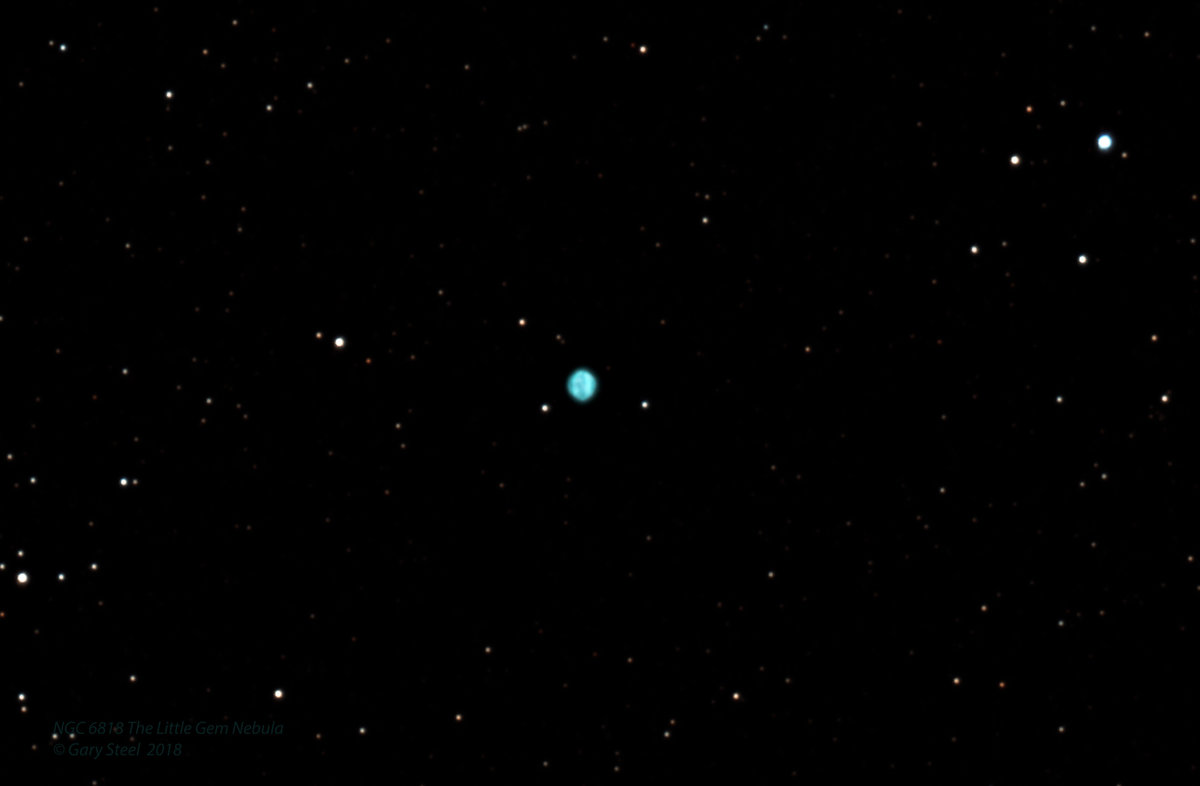This one is well-named. The Little Gem Nebula subtends a tiny visual angle; just 22 by 15 arcseconds. For those visitors unfamiliar with astronomical measurements, look at the back of your hand while it is at arm's length covering part of the sky. Point your little finger upward. It's width is about one degree. Take that width and divide it by 3600. That is one arcsecond - as I said, tiny. It's no wonder we need good telescopes and clear, still skies to view some of these objects.
The Gem Nebula is a planetary nebula (PN) that sits about 6.4 kly away in Sagittarius. Like all PNs, it is the remnant of a star that began its life weighing somewhere under 8 times our Sun's mass. In its final stages of life, such a star expands to become a red giant, then the core collapses into a white dwarf. This core bombards the gas shell with such a high level of radiation that it lights up. With very thin shells, we are better able to see the edges than the middle, which is why so many PNs appear as ring-like structures to us. The Gem is obviously an exception - quite bright across its entire width, giving it an apparent magnitude of 9.39. The mottled appearance arises from the fact that NGC 6818's gas envelope actually has two layers. The inner one is shaped a bit like a vase, while the outer one is more like a regular bubble. The overall teal-blue colour likely comes from ionised oxygen (Pottasch et al., 2005).
PNs have quite short lives by astronomical standards; usually less than 10,000 years. In an analysis of its spectra, Hyung et al. (1999) have suggested that NGC 6818 is about 9,000 years old so it is well along its lifespan. I know the feeling, Little Gem.

Date: 11 August, 2018
R.A.: 19h 44m 02s
Dec.: -14° 09' 29"
Photo stuff: 14 subs @ 180s ea.; ISO 800; Canon 60Da on RCX 16" f/8
